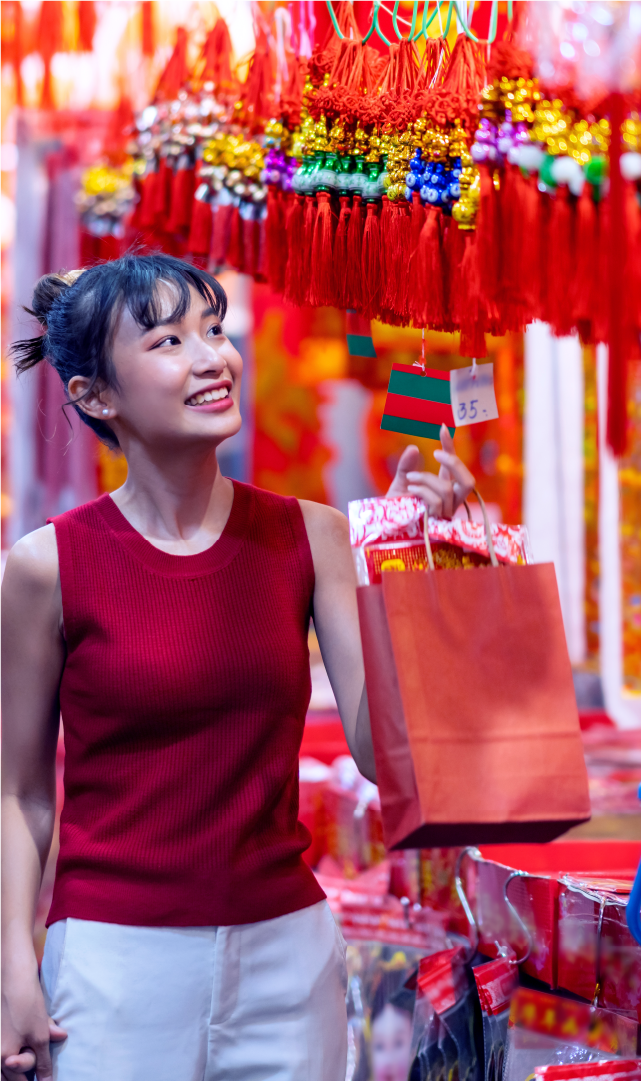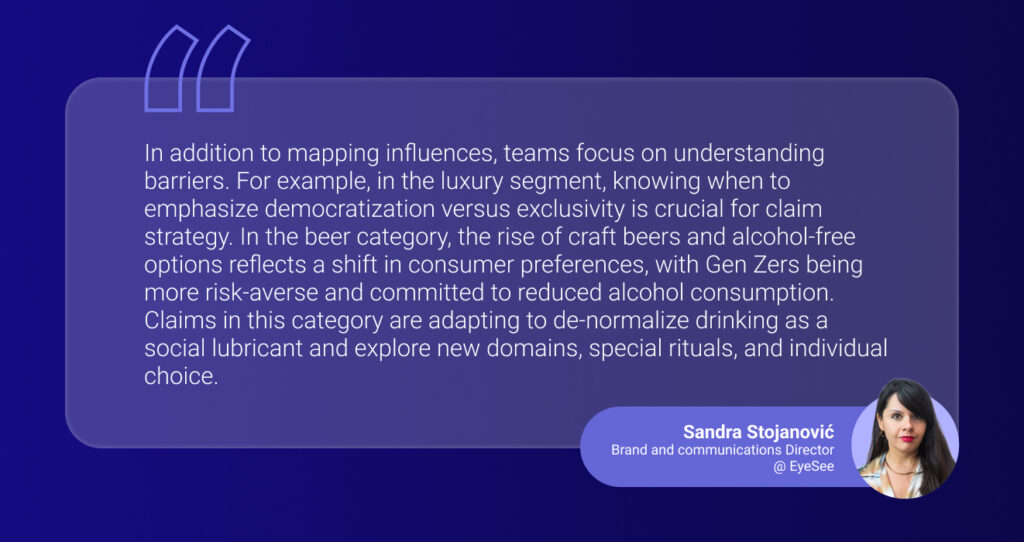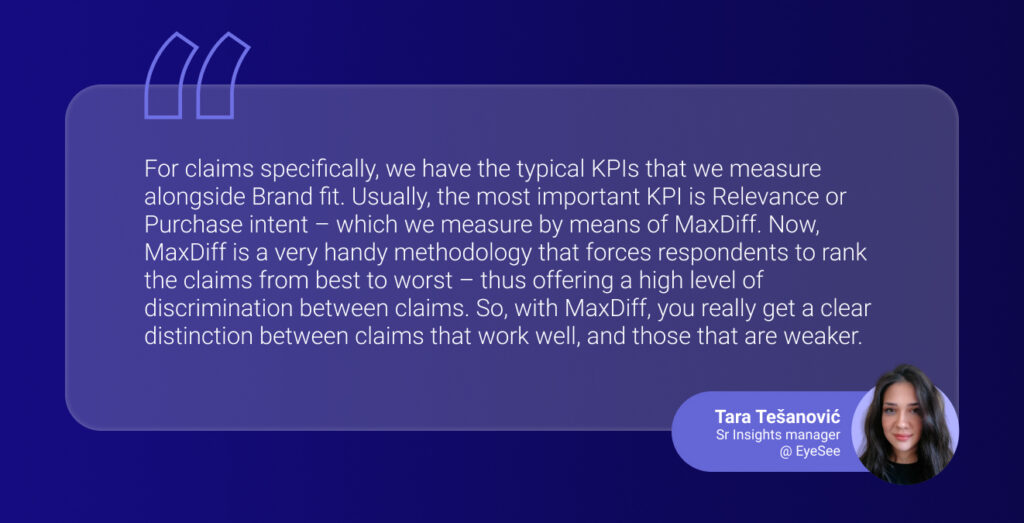by Xinyu Tok, Senior Insights Manager at EyeSee
Growing up celebrating the Lunar New Year, I treasure memories of getting new clothes, cousin playdates, red packets, and indulging in festive snacks, sweets, and drinks. Our home was adorned and filled with an array of treats in red containers (both sweet and salty), along with a colorful lineup of soft drinks for guests. Just reminiscing about these moments fills me with joy.
However, having been in the market research industry for more than five years, seeing the display of festive treats in stores and homes this Lunar New Year got me thinking about their pack designs and how they influence me as a consumer. In EyeSee, we always ask three main questions about the product we are testing.
Will the consumer: a) see it, b) like it, and c) buy it?
So, I wondered how special occasions such as the celebration of the Lunar New Year impact consumer behavior. When a brand invests in a special edition package, will it indeed be: seen, liked, and bought?
Being visually salient and distinctive is a real challenge
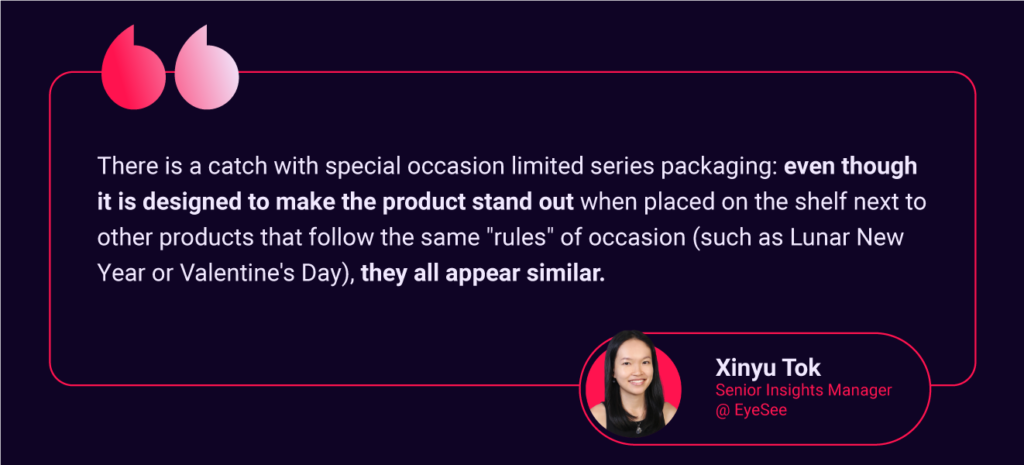
Not only that, consumers see it as a sea of festive red Lunar New Year treats, be they on the shelves, product listing pages, or shopping catalogs. While being in line with the festive color, products have the difficult challenge of capturing attention and attracting consideration. Personally, the shelves for Lunar New Year festive treats tend to be a blur in my visual background as I go about my shopping tasks.
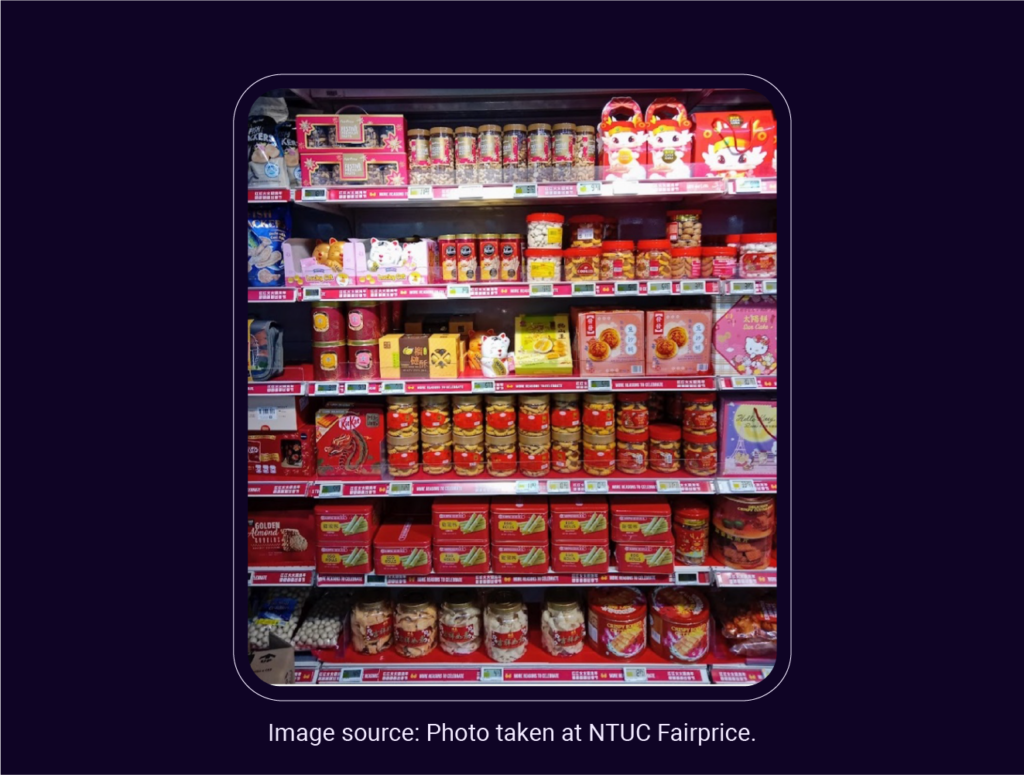
A recent exception is when I came across a Hello Kitty branded festive snack that is certainly distinct from others. Despite taking a double look, I placed it back on the shelf, as the Hello Kitty brand was not enough to convince me to purchase it.
Attracting attention is only the first step in making a purchase; the product pack or display must also be convincing enough in its offer, pricing, and claims to convert into a sale.
Successful special edition products that ended in homes
Of course, there is no simple answer to the question above. How to stand out on the shelf when occasion dictates similar design package rules. However, in context, virtual shopping testing for highly predictive insights is always the first thing I recommend. But what we can do right now is analyze several products that actually stood out and were bought by me or my family members.
Minimalism that highlights traditional quality
While visiting my relatives, I noticed that many of their Lunar New Year festive treats are from the Ding Bakery brand. Yet, as you see below, the brand adopts simple packaging without outstanding elements.
What could be driving their purchase?
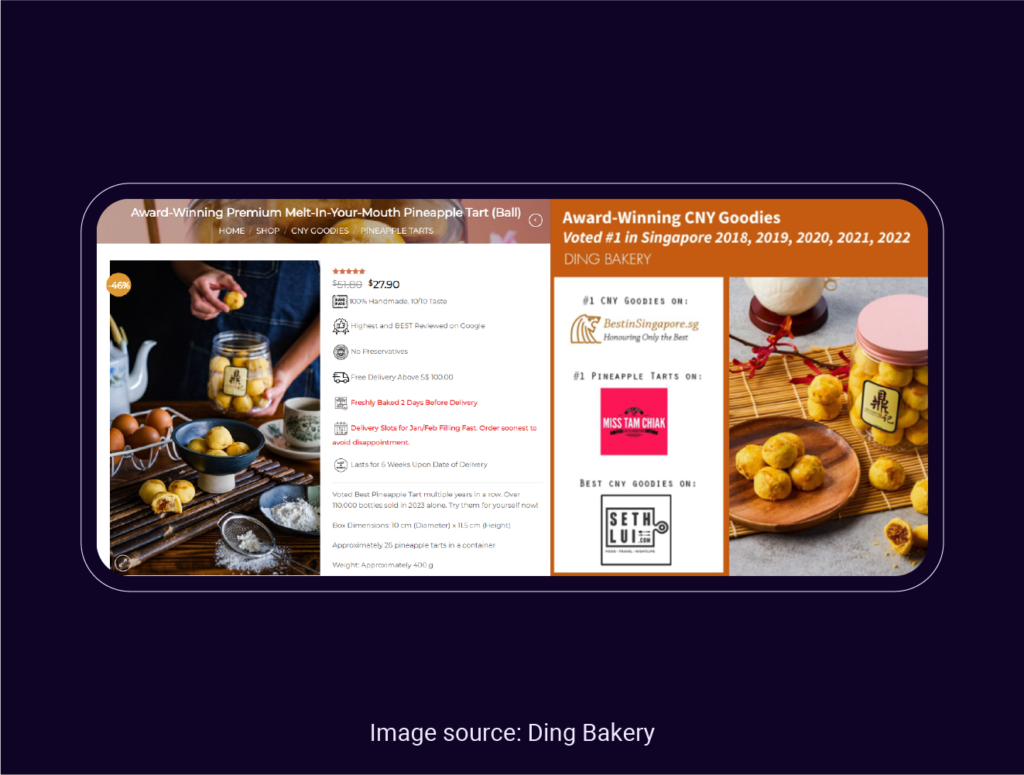
Going onto their product pages provided some clues. Take its pineapple tarts, for instance. Cues signaling their great taste had the effect of activating my craving for them! A close-up of the artfully displayed pineapple tarts, one half-bitten and the other held, provides powerful visual cues as well. The display of eggs signals the use of natural ingredients and is an indicator of quality. Flour, which is also lightly spilled, supports its freshly baked, delicious promise. Multiple credentials further back its claim of an award-winning taste.
Connect emotionally with cultural elements but stay unique
When I gifted love letter snacks recently, I chose one from the Ming Ang brand with a beautiful tin design that emphasized its traditional handmade Nyonya recipe. Its latest Lunar New Year design features delicate colors and floral patterns that convey its Nyonya heritage. While the light peach, purple, or blue color palette may seem atypical of the Lunar New Year, the rich maroon packaging sleeve with gold embossing visually anchors the products with the festival – supporting alignment with cultural expectations.
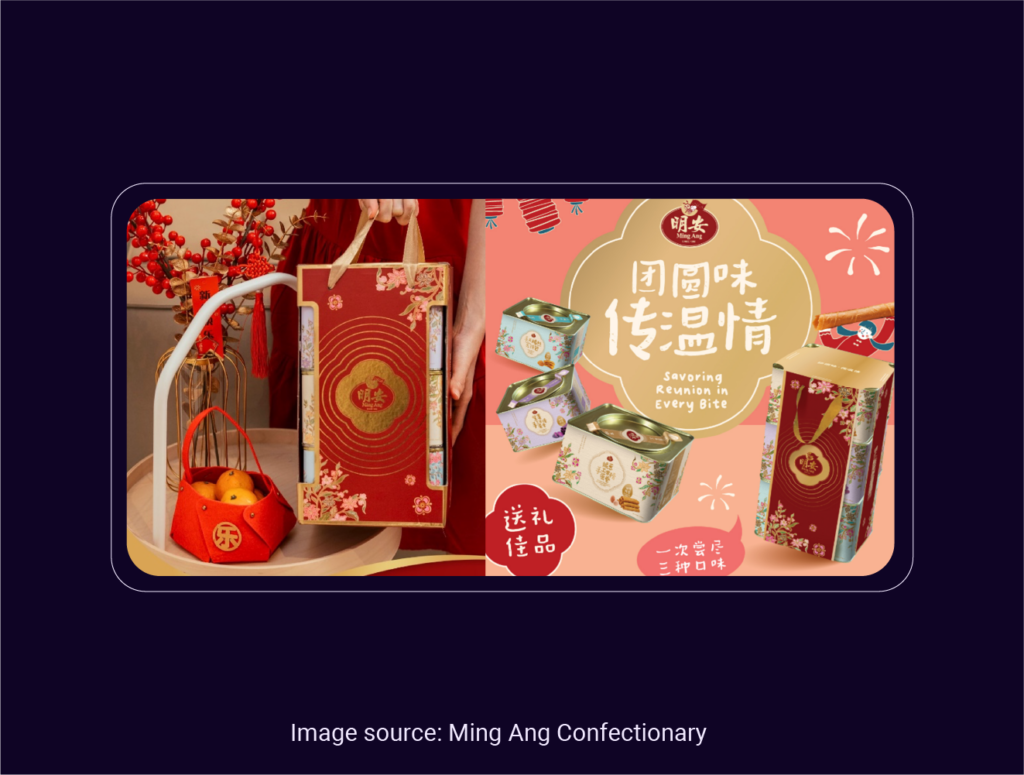
Even non-traditional sweets can be dressed for the occasion
At EyeSee, we have tested Lunar New Year packs, and it showed that festive and culturally relevant designs stand out more in attracting purchases. Lunar New Year-associated elements in the form of colors, motifs, icons, and zodiac signs anchor products with positive festive emotions.
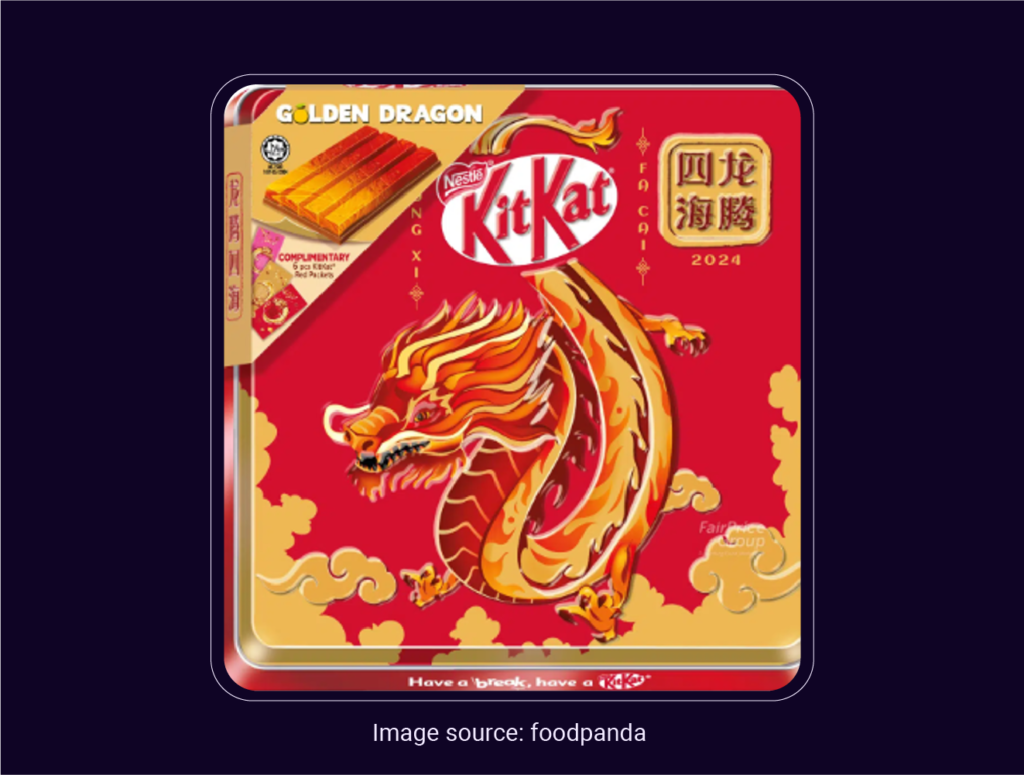
It can seem like a tricky thing to achieve when snacks fall outside of the typically traditional type of treat. However, those brands can also integrate such cultural elements for greater relevance during the Lunar New Year celebration. One of my favorite examples is KitKat’s Lunar New Year tin. Its fiery dragon, alongside a well-appointed seal, conveys blessings of success in the new Year of the Dragon. On top of that, the wafers’ golden bar appearance is a relevant signifier of prosperity. And, what is a better occasion for customers to try KitKat with the flavor of orange than this?
In conclusion
As a festival rich in culture and tradition, Lunar New Year offers brands a wide arena to incorporate psychology and cultural understanding into interesting, meaningful pack designs. Visual salience and distinctiveness, activating the senses, and incorporating cultural elements are some examples of strategic approaches in line with the intricate nuances of our behavior during this festive season.
For more ideas on how your everyday or festive pack designs can stand out to drive sales, explore our blog, or podcast, or simply reach out to any of us.
Wishing all a very blessed and prosperous Year of the Dragon!
Interested in reading more? Read about in-store display designs in the article Road to growth: Understanding travel retail consumer behavior.
